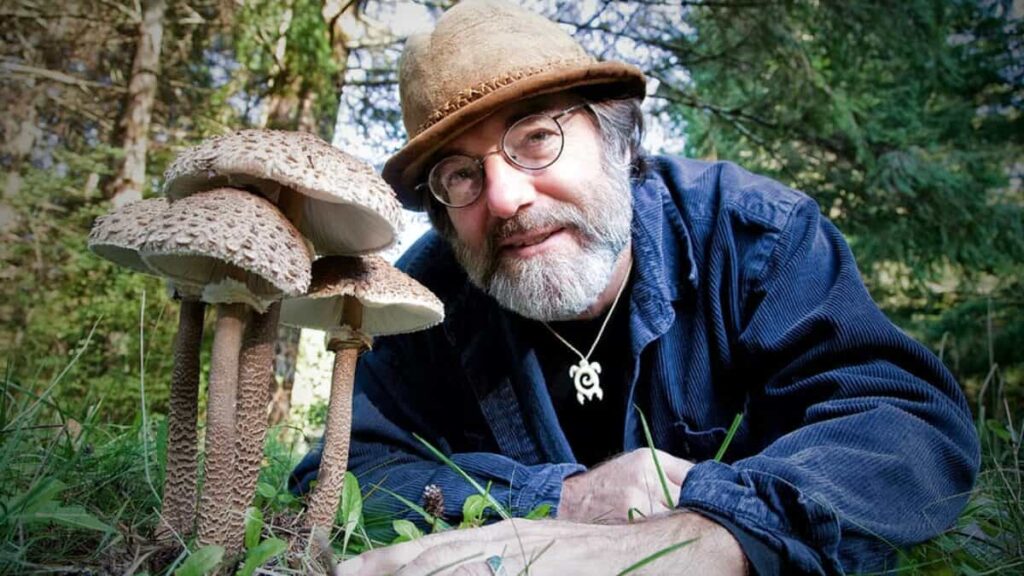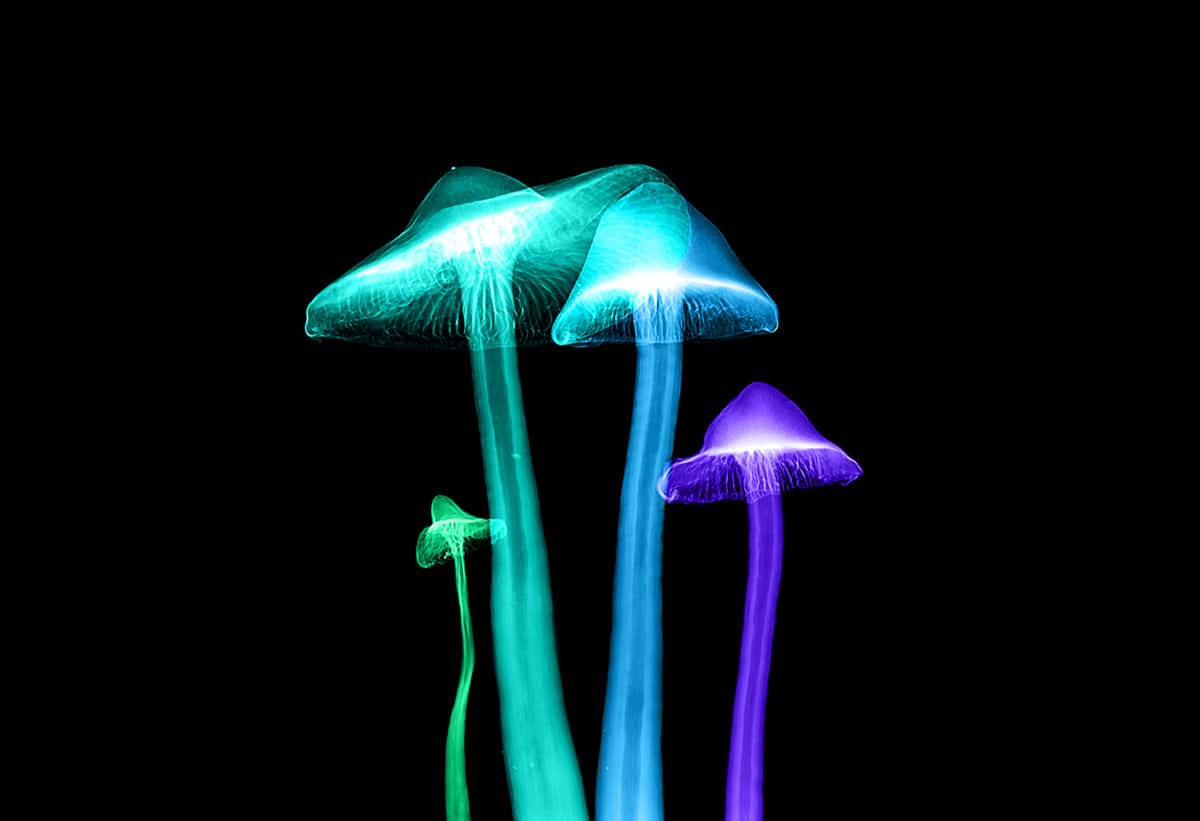
Can microdosing help ADHD?
Are you tired of feeling easily distracted, constantly in motion and unable to focus on your day-to-day tasks? Are you looking for innovative
Psychonauts, mycologists, philosophers, daydreamers, and nature enthusiasts are all most likely to be aware of Terence McKenna. McKenna was one of the most revered psychedelic advocates throughout the latter half of the 20th century. His legacy lives on through the significant cultural influence that he had on several generations of thinkers.
Paul Stamets may not yet be as widely known as McKenna, but his popularity is certainly beginning to expand. Known as one of the world’s leading mycologists, Paul Stamets has done more to promote awareness and acceptance of mushrooms than anybody else since McKenna’s time.
Although McKenna and his philosophies were undoubtedly more influenced by psychedelics than Stamets, the two share a lot of beliefs and ideas. Although McKenna was clearly driven by his enthusiasm for psychedelics, he allowed his experiences with these mind-expanding substances to color his philosophies and lectures.
This article will explain more about Paul Stamets and his life’s work, his ideas, and his relationship to Terence Mckenna. Some have begun to call Stamets a modern-day Terence McKenna, so we’ll no doubt be able to see a bit about how McKenna influenced Stamets in his thinking and life’s work.

Terence McKenna’s legacy began on November 16, 1946. He was obviously not born a mycologist, but his interest in nature was apparent at a very early age. He became a fan of fossil hunting as a child in Paonia, Colorado, where he grew up fascinated by nature and seeking outages into natural environments as often as possible.
He developed a keen interest in psychology by the time he was a teenager, having already finished one of Carl Jung’s most important works, Psychology and Alchemy, by the time he reached high school. His advanced reading level was also what led to his introduction to psychedelics, which he discovered around the same time thanks to an article published in LIFE magazine entitled “Seeking the Magic Mushroom.”
As he began to expand his mind through the use of plant medicines and devouring books by authors like Aldous Huxley, McKenna thus prepared himself for his future. He moved to California in 1963 and enrolled in university two years later in the midst of the Summer of Love.
His interests and studies expanded into seemingly endless horizons after he was accepted into the Tussman Experimental College, a unique project founded by the University of California’s philosophy professor, Joseph Trussman. In 1967, he began to study Tibetan folklore in the experimental college under the professor’s guidance as he and the 300 other students tackled complex issues regarding social problems, cultural phenomenon, and other fascinating issues that history’s greatest thinkers have attempted to answer.
After he left college, McKenna’s life seemingly intertwined with magical forces as he traveled the world to study visionary pants, mystical traditions, shamanic rituals, and ancient languages. After spending half a decade collecting butterflies, exploring different states of consciousness by imbibing all manner of substances, and smuggling hash across borders, McKenna and his brother, Dennis, shifted their focus onto psychedelic mushrooms.
Whilst exploring Colombia, the two brothers came across a massive patch of psilocybin mushrooms. They attempted to use vocal techniques to fuse another Amazonian psychedelic, harmine, with their own DNA in an attempt to unlock the collective memories of humanity.
Apparently, this mission was a success, because he and his brother both reported a number of powerful revelations and were prompted to study the ancient Chinese practice of divination, the I Ching. This led to the development of McKenna’s famous Novelty Theory.
After returning to school in 1972 and finally graduating in 1975 with a degree in ecology, shamanism (which apparently one could specialize in at university back in the day), and conservation of natural resources, McKenna began to engage with his future wife. He published a book with his brother, entitled The Invisible Landscape: Mind, Hallucinogens and the I Ching.
This book was the first of a number published by McKenna. He began lecturing shortly after its publication and also began to share his voice on underground radio stations. He began to cultivate psychedelic mushrooms with his brother with the spores that they had smuggled back from the Amazon, which is largely the reason for the continued presence of Cubensis mushrooms in North America.
He continued to lecture and advocate for the use of psychedelic medicine throughout the 80s. He was a strong proponent of plant medicine but also spoke on topics such as shamanism, nature, conservation, universal mysteries, imagination, consciousness, and his disapproval of dogma in lieu of direct experience.
McKenna became a powerful public figure, recognized publically by Timothy Leary (who acknowledged him as “one of the five or six most important people on the planet”) and comedian Bill Hicks, who developed a whole comedy routine based on McKenna’s philosophies. He spoke at raves and festivals throughout the late 80s and 90s and became a figurehead of the counterculture movement.
For the rest of his life, McKenna continued to educate, inspire, and entertain. He published numerous books and continued to lecture on a variety of topics until his death in the year 2000. He was diagnosed with an aggressive form of brain cancer in 1999 and, despite undergoing a number of experimental and conventional treatments, succumbed to the disease a few months later.

Paul Stamets had a similarly humble beginning compared to McKenna. Stamets was born in Salem, Ontario, with a stutter that hindered his social development by causing him significant embarrassment. However, in retrospect, he gives credit to this stutter for helping him discover one of the strongest allies that he has encountered in life: mushrooms.
Because he was often left feeling awkward and uncomfortable during social engagements, Stamets avoided them by keeping his gaze turned towards the ground. In doing this, he found himself noticing the peculiar little organisms growing all over the place: mushrooms.
Despite his early fascination with fungi, however, he didn’t experiment with the magical variety until he was 18. His first fungal experience was about as profound as one might imagine.
After the mushrooms began to take effect, a lightning storm rolled in. At the time, Paul was high up in a tree that he’d climbed in order to survey from high up the beauty of nature. He found himself stuck in the tree with the very potent realization that he could be struck by lightning and die at any moment.
Despite the very real danger that he was in, Stamets found that he wasn’t afraid. Instead, he took the opportunity to contemplate himself, his nature, and, well, the nature of nature itself. He was catapulted towards the typical, but always powerful, psychedelic moment during which came to terms with his own mortality and unearthed a new level of respect for nature and life in general.
During this experience, young Stamets was repeating to himself a mantra. He kept telling himself over and over that he wouldn’t stutter any longer. Once the storm abated and he made his way down the tree, he encountered his gorgeous neighbor on the walk home. A woman that Stamets struggled to speak with even more than he did with the average person, she was just as surprised as Stamets when the two of them exchanged a casual, stutter-free greeting.
On that day, Stamets lost forever his stutter. In its place, he gained an undying fascination and respect for mushrooms. The study and advocacy of mushrooms, psychedelic and otherwise, became Paul’s life work.
Stamets’ business, Fungi Perfecti, LLC, was started in 1980. The business focuses on the medicinal and culinary use of various mushrooms. He currently advises the Program of Integrative Medicine at the University of Arizona Medical School.
Throughout his adult life, he’s worked alongside numerous prestigious organizations, especially in the United States. His work with the US Department of Agriculture and the National Institute on Health has helped to move mycelium research to new heights.
Paul Stamets has written six of the most popular books on mycology, the most recent one being Mycelium Running: How Mushrooms Can Help Save the World. Several of his other books are used as textbooks in schools and for those enrolled in specialty mushroom industries.
Stamets was also one of the co-authors of two of the first clinical studies on medicinal mushrooms funded by the National Institute of Health. He has one of the most extensive collections of mushroom specimens on the planet and has worked with governments to help develop protective measures against bio-weaponry using mushrooms.
Due to his clever innovations and his dedication to the cause, Stamets has received a number of awards for his work in the environmental space.
If there’s one thing that both McKenna and Stamets agree wholeheartedly on, it’s what Terence and his brother Dennis coined “the Stoned Ape Theory.”
In short, this theory suggests that magic mushrooms played an instrumental role in the development of human consciousness. The theory was first described in McKenna’s book, “Food of the Gods.”
The theory was gradually pieced together from conversations that Terence McKenna shared with his brother, Dennis. Dennis is an ethnopharmacologist and helped to flesh out a number of his brother’s ideas.
In short, the idea is that that human beings were comparatively pretty dumb until we started getting high on mushrooms, and that getting high on mushrooms was the smartest thing that our species ever did. Imagine telling a high school student that the individual most responsible for our cognitive evolution was the first person to eat a magic mushroom?
The theory is, of course, a bit more detailed than the previous description would suggest. In fact, the previous description would be more akin to what a proponent of the “Stoned Ape” theory might say. In fact, neither Terence nor Dennis ever used the term “Stoned Ape,” and Dennis continues to speak out against the name that has been applied to their theory. He believes it to be a misrepresentation of a potentially important moment in human development.
The theory suggests that magic mushrooms are intrinsically more valuable to humans, and that by consuming them, they have helped to accelerate the development of our brains. The emergence of what is considered typical ‘human’ consciousness is hotly debated, but many suggest that this occurred about 2 million years ago. This coincides with a time period during which the brain tripled in size over a relatively short time, evolutionarily speaking.
Certain magic mushrooms are notorious because they grow fabulously near cow dung.
Dr. Thomas Falk, professor of Philosophy and Education and the University of Dayton, says that the McKenna brothers’ theory could also account for the creative explosion that was seen in human history around 40,000 years ago. Around this time, people first began to express themselves through symbols and language.
The theory notes that the consumption of magic mushrooms provides numerous benefits for tribal and nomadic cultures interested in survival. Psychedelic mushrooms enhance sensory perception, augment empathy and interconnection, and increase awareness of natural rhythms. These things are vital for the survival of any group of humans.
Terence believes that our ancient ancestors would have made sure to follow, or at least maintain, herds of cows for food and clothing. They would also have consumed the psychedelic mushrooms that are fertilized by cow dung.
Paul Stamets also agrees that these mushrooms were instrumental in the sudden emergence of traits representative of complex civilization: language, art forms, creativity, and so on. These things seemed to emerge too quickly for evolution to account for; a cognitive leap of this size would generally take millions of years.
Paul Stamets points to a number of scientific discoveries in the field of mycology that support McKenna’s theory, most notably epigenetic inheritance and neuroplasticity.
Mushrooms are highly capable of enhancing neuroplasticity. Neuroplasticity is a term that describes the brain’s ability to build and maintain new connections and synapses, to create new pathways. Magic mushrooms encourage the brain to produce more BDNF (brain-derived neurotrophic factor) which helps the brain create these connections more quickly.
Recent research also indicates that the psychedelic experience can help people struggle through intergenerational trauma, also known as epigenetic inheritance. Psychedelic mushrooms produce a number of the same benefits as meditation, allowing people to transcend their psychological barriers and overcome issues that have plagued them for years.
By helping people work through their intergenerational trauma, mushrooms may have enhanced the survival of ancient humans who were prone to snacking on these funny fungi. The mushroom eaters would be better capable of overcoming fear and limitations than those who did not take advantage of psychedelics.
The many Terence McKenna statements that have now become basic truths among psychedelic users were not the end. Paul Stamets is continuing the research that Terence McKenna largely began, and his work is having a tremendous influence all throughout the globe.
Whereas McKenna succeeded at basically bringing mushrooms into North America and making psychedelic education available to a wide audience, Stamets is revolutionizing the world of psychedelics entirely. He works with a number of highly influential organizations and companies with a wide reach in the medical and psychotherapeutic communities. In all of his work, he informs, educates, and encourages the use of psychedelic and medicinal mushrooms.
Stamets’ company, Fungi Perfecti, is the base for all of this fantastic information. Through Fungi Perfecti, Stamets and a number of other enthusiastic mycologists distribute mushroom products, information, and studies to people across the globe.
In 2008, Stamets was acknowledged in the Utne Reader as being one of the “50 Visionaries Who Are Changing the World.” In 2010, he received the President’s Award from the Society for Ecological Restoration: Northwest Chapter. The list goes on, these are only a couple of his most prominent awards.
Stamets also participated in the documentary “Fantastic Fungi,” a beautiful film that showcases the magic of mushrooms and provides a lot of interesting information about them. The film showcases the power of mycelium and explains how these powerful fungal networks are vitally important for restoring health, not only to the forest environment where they grow but to the planetary ecosystem and human health at large.
His research has extended in numerous directions. He has explored the use of mushrooms for helping to fight diseases like tuberculosis and pox. He has helped us understand how fungi filter toxins and pollutants. He has shown that mycelium can protect bees from viral attacks.
Presently, he is working on helping to raise awareness on the importance of mushrooms and their natural environments, especially the old-growth forests of the Pacific Northwest.
He was a vocal proponent of the Fairy Creek protests in 2020-2021 in which the Teal Jones logging company and the Canadian RCMP ruthlessly endangered the safety of hundreds of protestors who were peacefully protesting the last intact watershed on Vancouver Island, one of the most abundant habitats for mushrooms in the world.
He also recognizes that of all the mushrooms we know of—millions of species—only a few have been studied for their medicinal benefits. In other words, he believes that the study of mushrooms is only just beginning.
Terence McKenna and Paul Stamets are two of the most prominent mycologists that the world has seen in the last century. Both of them provided immeasurable contributions to the world of mushrooms and mycelium, and their work has exposed an incredible natural world with impressive ability to heal the environment and human health.
McKenna passed away in 2000, but Stamets is continuing mycological research with fervor. He wants the world to recognize the vast importance of mushrooms, psychedelic and otherwise, for improving physical, mental, environmental, and even societal health.

Are you tired of feeling easily distracted, constantly in motion and unable to focus on your day-to-day tasks? Are you looking for innovative

If you take a step back and look at the relationship you have with your mind, what would you see? Do you enjoy being inside

Neuroplasticity – the brain’s ability to rewire and restructure itself. When your brain’s neuroplastic capabilities are strong, it promotes your brain’s physical ability for adaption

Maybe you’re a psychedelic enthusiast who first decided that you liked mushrooms at a party, or a nutritional advocate who recommends them for their health

Throughout human history, psychedelics have been subjected to all manner of different labels, judgments, and stigmas. For the largest portion of human history, psychedelics have

LSD is often the drug of choice for professionals who say that dropping a smidge of acid gives them the exceptional competitive edge they need.
GET 10% DISCOUNT WITH NOTIFIED ABOUT THE LATEST NEWS AND UPDATES. NO SPAM, WE PROMISE!
FREE Tracked shipping on orders over €250 to EU countries.
Monday- Friday 8.30am- 5pm (CET)
A range of options available
Guaranteed delivery or your money back